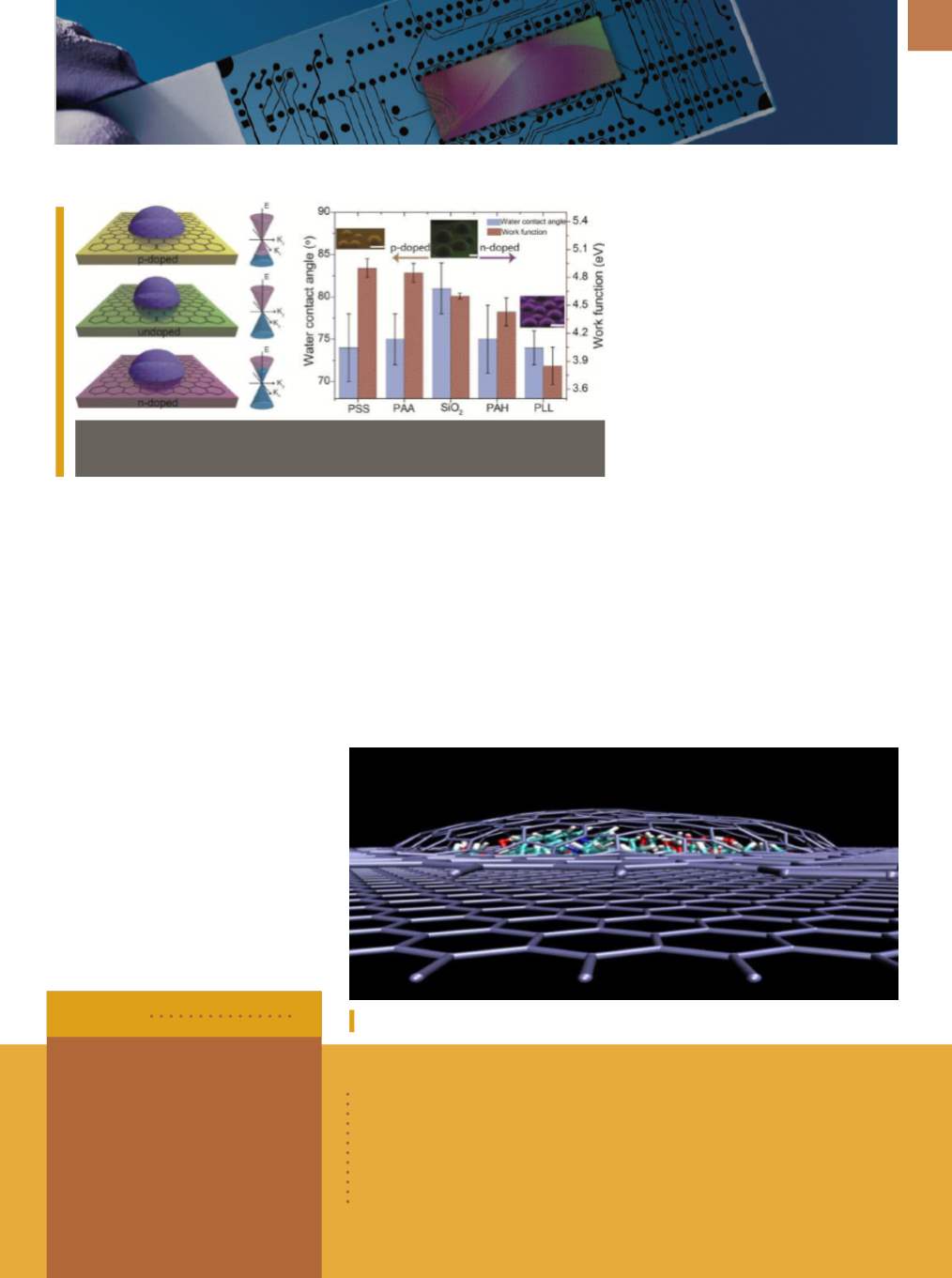

A D V A N C E D
M A T E R I A L S
&
P R O C E S S E S |
O C T O B E R
2 0 1 6
1 5
TUNABLE WETTING AND
ADHESION OF GRAPHENE
Researchers from the University
of Illinois at Urbana-Champaign have
demonstrated doping-induced tunable
wetting and adhesion of graphene, re-
vealing new opportunities for advanced
coating materials and transducers.
“Our study shows for the first time
that graphene demonstrates tunable
wettability—switchable
hydrophobic
and hydrophilic behavior—when its
electron density is changed by sub-
surface charged polymers and metals
(a.k.a. doping),” explains SungWoo
Nam, an assistant professor. “This find-
ing sheds lights on previous unclear
links between quantum-level charge
transfer and macroscopic surface wet-
tability for graphene. This opens new
doors of possibility for tunable surface
coating and electrowetting displays
without continuous external electric
current supply, which will translate into
significant energy savings.”
For more
information:
SungWoo Nam, swnam@illinois.edu, mechanical.illinois.edu.
2D MATERIALS CREATED
IN GRAPHENE PRESSURE
COOKER
A graphene hydraulic nanopress
is now capable of creating new 2D
Graphene hydraulic press.
Doping-induced tunable wetting of graphene. Courtesy of University of Illinois.
materials by exerting immense pres-
sure on compounds sealed between
layers of graphene. New findings
reveal that sealing molecules between
two atomically thin sheets of graphene
creates extreme pressure on the mol-
ecules to modify their state, convert-
ing them to new crystals, according
to a University of Manchester research
group, UK, led by Professor Rahul
Nair. The results demonstrate nov-
el methods for creating versatile 2D
materials, which have unique proper-
ties and benefits suited to a wide range
of applications.
The graphene nanopress is made
possible due to the material’s unique
properties. Graphene is stronger than
diamond, which allows the extreme
amount of pressure to be exerted on
trapped molecules without breaking
the graphene layers. The two stacked
layers also create a self-sealing enve-
lope around the trapped molecules
to contain them. Molecules enclosed
NANOTECHNOLOGY
The
Congressional Research
Service
prepared a policy primer
on nanotechnology, which covers
federal research and development,
U.S. competitiveness, environmen-
tal, health, and safety concerns,
nanomanufacturing, and public
awareness.
https://fas.org/sgp/crs/misc/RL34511.pdf.
BRIEFS
Federal agencies participating in the
National Nanotechnology
Initiative
released a white paper describing the collective federal
vision for the emerging and innovative solutions needed to realize
the Nanotechnology-Inspired Grand Challenge for Future Computing.
www.nano.gov/sites/default/files/pub_resource/federal-vision-for-nanotech-inspired-future-computing-grand-challenge.pdf.
















